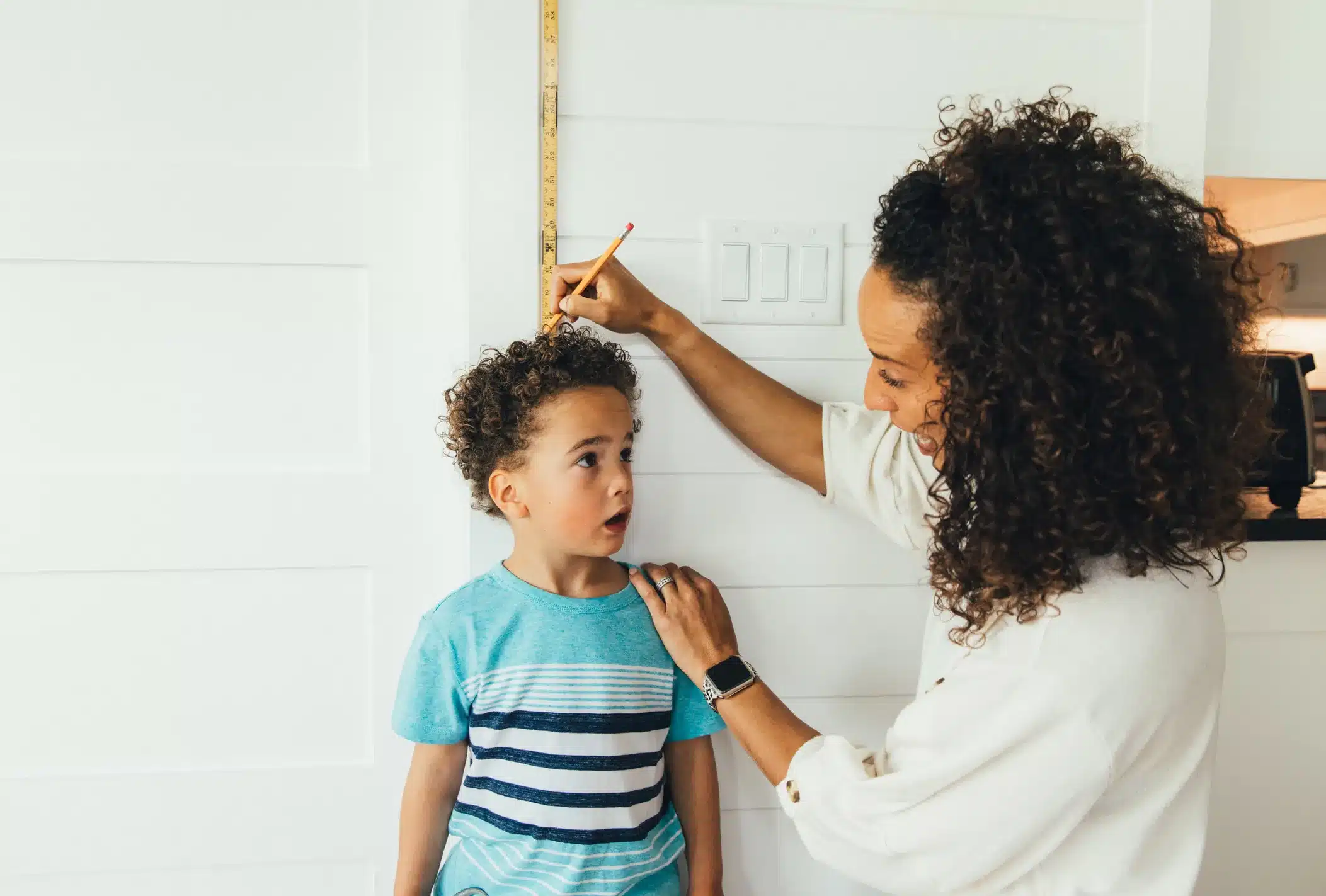KidsStreet Urgent Care is sharing the best tips to ease the aches of your little one’s growing pains.
Defining Growing Pains
The term “growing pains” was first coined over 200 years ago in 1823 by a French physician who thought the pains felt by young children were related to growth spurts. While we know now that these pains are not related to growth spurts, we still don’t know the exact cause of growing pains.
Some theories on the causes of growing pains include:
- Flat Feet – Podiatrists (foot specialists) recognize flat feet as a risk factor for growing pains.
- Genetics – Some studies have shown a higher likelihood of growing pains in your children if you experienced growing pains as a child.
- Hypermobility – Two studies have shown a relationship between an unusually large range of motion in joints and growing pains. However, another study showed no relationship.
- Lower Pain Tolerance – Some researchers have suggested that a lower pain tolerance may cause growing pains. Their studies showed that children who experienced growing pains also experienced more headaches and tummy aches.
- Overuse / Increased Activity – Many physicians and researchers have noted that growing pains tend to occur after a day of increased physical activity and possibly overuse of some muscle groups.
- Restless Leg Syndrome (RLS) – There is debate over whether restless leg syndrome is related to growing pains. RLS is thought to have a genetic cause and often occurs in families who also experience growing pains.
- Vitamin D Deficiency – One study showed that 94 percent of children who experienced growing pains were also deficient in vitamin D. However, this was a poorly run study, and other studies have shown no relationship between growing pains and vitamin D.
These are all just theories. Most experts believe that a combination of these leading theories likely causes growing pains.
Healthcare experts also agree that growing pains are not dangerous and do not affect growth, and that’s good news! However, they can be pretty painful. Let’s talk about the symptoms and how you can treat them to get your little one feeling better fast!
Symptoms of Growing Pains
Growing pains are generally experienced by children between the ages of 3 and 12 but may extend into the early teen years for some kids. Growing pains are usually:
- Described as deep aching pains or throbbing pains. Your child may also describe the pain as cramping.
- Experienced in the late afternoon, evening, or at night. Growing pains may wake your child up in the middle of the night. Even so, your child should wake up in the morning without pain or stiffness and be active during the day without pain.
- Felt behind the knees, in the calves, shins, or thighs. Your child may also experience these aching pains in their arms, but growing pains are most often felt as leg pains.
- Intermittent. Your kiddo may have growing pains for a few evenings in a row and then may not experience them again for a few weeks or months.
You should contact your child’s healthcare provider if your child has:
- A limp when they walk
- Dark urine
- Fever
- Joint pain
- Pain and stiffness when they wake up
- Pain during the day
- Pain that doesn’t improve with home treatment
- Redness or swelling of the painful areas
- Weight loss or a loss of appetite
Diagnosing Growing Pains
Growing pains are diagnosed based on your child’s symptoms and a physical exam. Your healthcare provider will likely ask:
- Does anything make the pain better or worse?
- Has your child had any recent injuries that could be causing the pain?
- How often is the pain felt?
- Is the pain at night only? Or is the pain felt during the day?
- When did the pain start?
- Where is the pain felt?
Your healthcare provider will examine your kiddo for joint or limb injuries or instability.
If your child has any concerning symptoms like those listed above, they will likely order imaging or lab tests to see if there is another cause for their pain.
If your child does not have any concerning symptoms, your healthcare provider will likely recommend the same great at-home growing pain treatment tips we’re about to share.
Treating Growing Pains
There’s no specific treatment for growing pains, such as prescription medications. Our best at-home treatment tips when growing pains strike include:
- Administer an over-the-counter pain reliever such as acetaminophen (Tylenol), ibuprofen (Advil), or naproxen for pain relief.
- Comfort and encourage your child and assure them the pain will stop. Don’t underestimate the power of your love, presence, and support.
- Place a heating pad on the painful areas.
- Try gentle massaging the area.
- Try gentle stretches of the muscles in the areas where your kiddo is experiencing pain.
Additional steps you might take to reduce the risk of growing pains include:
- Ask your healthcare provider about physical therapy to strengthen your little one’s joints if they have hypermobility.
- Consider enrolling your child in a variety of physical activities to prevent the overuse of one muscle group.
- Have your kiddo fitted for shoe inserts (orthotics) if they have flat feet.
Turn to KidsStreet Urgent Care
Not sure if your kiddo’s nighttime aches are growing pains or something more? KidsStreet Urgent Care can help!
Register online to visit a clinic near you. You and your little one can wait in the conveniences of your home or care until we’re ready to see you. We’ll text you when it’s time to head to the clinic.
We love walk-ins! However, we do recommend registering online to reduce your in-clinic wait time. Walk-ins join the same queue as those who register online.

